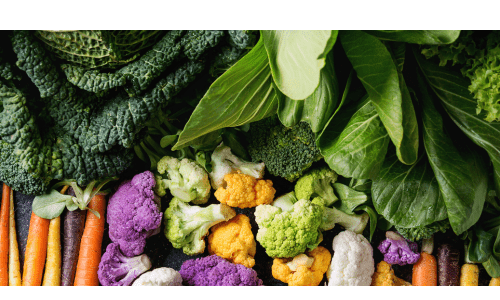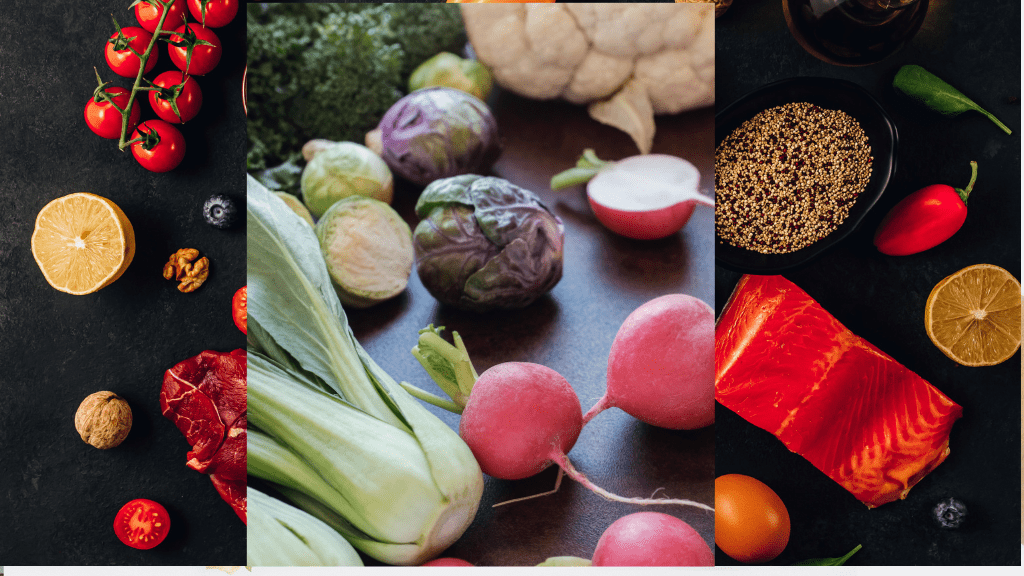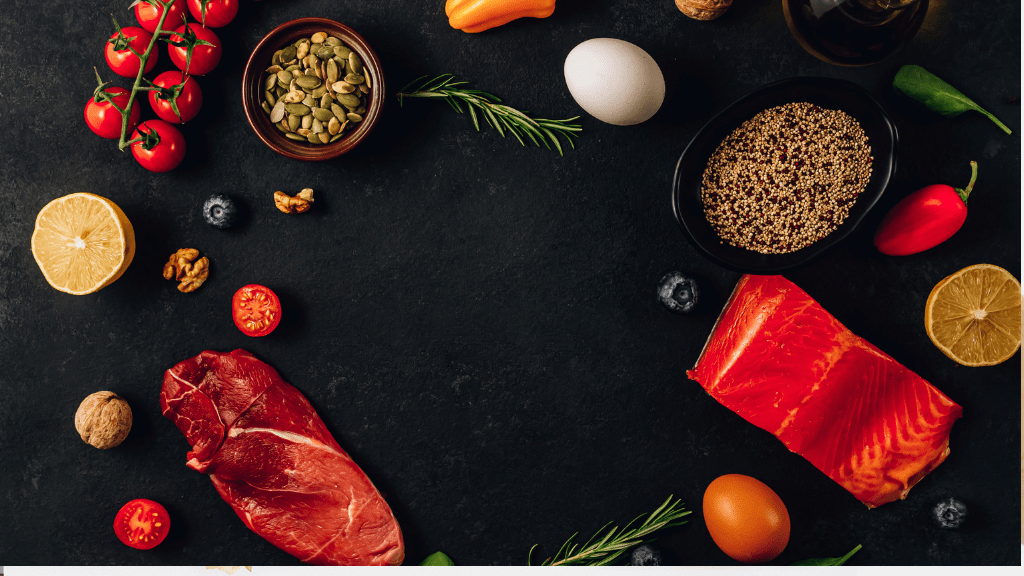Introduction
Fiber is a vital component of a healthy diet, yet many people fall short of the recommended daily intake. Not only does fiber support digestive health, but it also plays a key role in weight management, blood sugar control, and heart health. High-fiber vegetables are among the best sources of dietary fiber, offering a range of other nutrients that contribute to overall wellness. In this post, we’ll explore the top 10 high-fiber vegetables you should consider incorporating into your daily diet.
1. Artichokes
Artichokes are one of the most fiber-rich vegetables you can eat. A single medium artichoke contains about 10 grams of fiber, which is roughly 40% of the daily recommended intake for women. In addition to fiber, artichokes are packed with antioxidants and essential nutrients like vitamin C, vitamin K, folate, and magnesium. Artichokes can be steamed, grilled, or added to salads and pasta dishes for a delicious and healthy boost.
2. Broccoli
Broccoli is a well-known superfood, and for good reason. This cruciferous vegetable contains about 5 grams of fiber per cup, along with a host of vitamins and minerals, including vitamin C, vitamin K, iron, and potassium. Broccoli is also rich in antioxidants and has been shown to have anti-inflammatory properties. Whether steamed, roasted, or added to stir-fries, broccoli is a versatile and nutritious addition to any meal.
3. Brussels Sprouts
Brussels sprouts are another high-fiber cruciferous vegetable, providing about 4 grams of fiber per cup. They are also rich in vitamins C and K, as well as folate and manganese. Brussels sprouts have a slightly bitter taste that pairs well with savory and sweet flavors alike. Try roasting them with a drizzle of olive oil and a sprinkle of sea salt, or sautéing them with garlic and balsamic vinegar for a delicious side dish.
4. Carrots
Carrots are not only rich in fiber but also in beta-carotene, an antioxidant that the body converts to vitamin A, which is essential for eye health. A cup of raw carrots contains about 4 grams of fiber. Carrots are incredibly versatile—they can be eaten raw as a snack, roasted, or added to soups and stews. Grated carrots also make a great addition to salads and sandwiches.
5. Sweet Potatoes
Sweet potatoes are a fiber-rich root vegetable that provides about 4 grams of fiber per medium-sized potato. They are also high in vitamins A and C, manganese, and potassium. Sweet potatoes have a naturally sweet flavor that works well in both savory and sweet dishes. They can be baked, roasted, mashed, or even used as a base for soups and casseroles.
6. Spinach
Spinach may not be the highest in fiber, but it still provides about 2.4 grams of fiber per cup when cooked. Spinach is also packed with iron, calcium, and vitamins A and C. It’s a nutrient-dense vegetable that can be easily added to a variety of dishes. Add spinach to your morning smoothie, use it as a base for salads, or sauté it with garlic as a simple and nutritious side dish.
7. Green Peas
Green peas are a fantastic source of both fiber and plant-based protein, with about 8 grams of fiber per cup. They are also rich in vitamins A, C, and K, as well as folate and manganese. Green peas can be added to salads, soups, and stir-fries, or served as a side dish. They’re also a great addition to pasta dishes, adding both texture and nutrition.
8. Kale
Kale is a nutritional powerhouse, offering about 2.6 grams of fiber per cup. It’s also high in vitamins A, C, and K, as well as calcium and antioxidants. Kale can be enjoyed raw in salads, blended into smoothies, or cooked in a variety of ways. For a healthy snack, try making kale chips by baking the leaves with a little olive oil and sea salt.
9. Beets
Beets are a high-fiber vegetable that provides about 4 grams of fiber per cup. They are also rich in antioxidants, which can help lower blood pressure and reduce inflammation. Beets have a naturally sweet flavor and can be roasted, boiled, or eaten raw in salads. They’re also delicious when pickled or added to smoothies for a nutrient boost.
10. Cauliflower
Cauliflower is a versatile vegetable that contains about 3 grams of fiber per cup. It’s also high in vitamins C and K, as well as folate and potassium. Cauliflower can be used as a low-carb substitute for rice, mashed potatoes, or even pizza crust. It can also be roasted, steamed, or added to soups and stews for extra texture and nutrition.
How to Incorporate High-Fiber Vegetables into Your Diet
Incorporating more high-fiber vegetables into your daily meals doesn’t have to be challenging. Here are some tips to help you increase your fiber intake:
- Start with Breakfast: Add vegetables like spinach, kale, or avocado to your morning smoothie or omelet for a fiber-rich start to the day.
- Snack on Veggies: Keep pre-cut veggies like carrots, celery, and bell peppers on hand for a quick and healthy snack.
- Make Vegetables the Star: Create meals where vegetables are the main component, such as a hearty vegetable stir-fry, roasted veggie platter, or a big salad filled with a variety of high-fiber vegetables.
- Get Creative with Recipes: Experiment with new ways to prepare vegetables. Try roasting, grilling, steaming, or sautéing them to enhance their flavor and make them more enjoyable.
- Substitute with Vegetables: Use vegetables as substitutes in your favorite recipes. For example, replace pasta with zucchini noodles, or use cauliflower rice instead of regular rice.
FAQs About :
1. Why is fiber important in my diet?
-
Fiber is essential for maintaining healthy digestion, preventing constipation, and promoting regular bowel movements. It also helps control blood sugar levels, lowers cholesterol, and supports weight management by making you feel full longer.
2. Can I get enough fiber just from vegetables?
-
While vegetables are an excellent source of fiber, it's important to consume a variety of fiber-rich foods, including fruits, whole grains, legumes, and nuts, to ensure you meet your daily fiber needs.
3. How can I incorporate more high-fiber vegetables into my diet?
-
You can add high-fiber vegetables to your meals by including them in salads, stir-fries, soups, and smoothies. Snacking on raw vegetables like carrots, broccoli, and celery, or using vegetables as a base for dishes like cauliflower rice or zucchini noodles, are also great ways to increase your fiber intake.
4. Are there any side effects of eating too much fiber?
-
Increasing fiber intake too quickly can lead to bloating, gas, and abdominal discomfort. It's important to gradually increase your fiber intake and drink plenty of water to help your body adjust.
5. Can high-fiber vegetables help with weight loss?
-
Yes, high-fiber vegetables can aid in weight loss by promoting feelings of fullness, which can reduce overall calorie intake. The fiber content slows digestion, which helps regulate blood sugar levels and prevents overeating.
Conclusion
Eating a variety of high-fiber vegetables every day is one of the best ways to improve your overall health. These vegetables are not only rich in fiber but also packed with essential vitamins, minerals, and antioxidants that support a healthy body. By making high-fiber vegetables a regular part of your diet, you can enjoy better digestion, improved heart health, and even help with weight management. Start incorporating these top 10 high-fiber vegetables into your meals today, and reap the benefits of a healthier diet.




